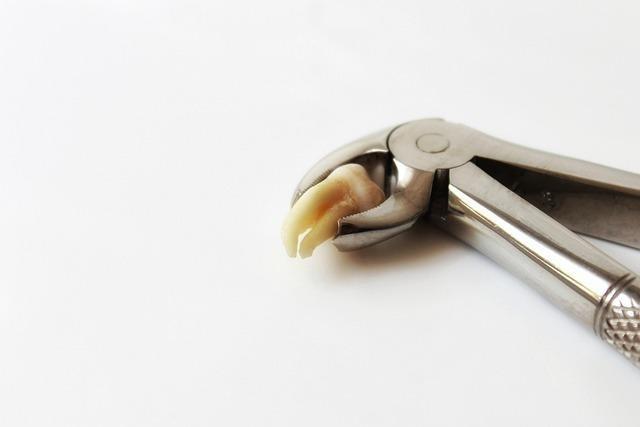Do you have a tooth extraction or other dental procedure coming up in a few days? If yes, then your dentist or oral surgeon might have mentioned vaping as one of the lifestyle habits you must avoid temporarily during the recovery process.
The reality is that vaping can impede recovery after a dental procedure. But perhaps the more pertinent question is how soon you can vape after getting a tooth removed.
Read on as we delve into what could possibly go wrong if you vape too soon after tooth extraction. We’ll also give a timeline on when you can safely fire up your e-cig after undergoing dental surgery.
Vaping After Tooth Extraction: Is It Possible?
One of the frequently asked questions by seasoned vapers planning to get their teeth removed is, can you vape after tooth extraction?
You can certainly vape after getting your teeth extracted. In fact, it’s possible to continue vaping after undergoing any other dental surgery. However, dentists recommend waiting for a couple of days for the wound to heal before resuming your vaping sessions.
As already hinted, vaping too soon can slow down your recovery after a dental procedure. It could also open you up for other severe medical complications.
How Soon Is Too Soon?
Many dentists advise holding off vaping for 3 – 5 days after a tooth extraction. The same goes for other major oral and dental surgeries. This provides the resultant wound with ample time to heal.
In the same breath, it’s important to avoid vaping at least 48 hours before undergoing a major dental surgery. That’s especially true if the procedure involves removing an unbearably painful tooth.
What Might Happen If You Vape Too Soon?
To understand the potential adverse implications of vaping too soon after tooth removal, you’ll need to familiarize yourself with the term ‘dry socket.’
A dry socket is the painful feeling often resulting from tooth extraction. The condition occurs when a blood clot doesn’t form at the site where the tooth was extracted from. It may also happen when a blood clot dissolves or gets dislodged from the tooth removal site before the wound heals completely.
What Are The Symptoms Of Dry Socket?
Numbing pain is the signature symptom of dry sockets. The pain typically radiates from the tooth extraction site to the temple, neck, ear, and eye on the same side where the tooth was removed. It can last anywhere from one to three days.
Dry sockets also tend to miss blood clots. You can determine that by running your tongue or finger gently through the hole.
A foul smell in your mouth or bad breath are other tell-tale signs of a dry socket. The odor usually indicates that the empty hole is already harboring bacteria.
Other dry socket symptoms include a slight fever and visible bone in the socket when observed using a mirror.
What’s The Relationship Between Vaping and Dry Socket?
Vaping involves a significant amount of suction force. The sucking motion when you draw heated vapor from your vaporizer can easily dislodge a blood clot from a tooth extraction site.
Remember that the absence of a blood clot is one of the leading causes of dry sockets.
Removing a blood clot or preventing it from forming effectively exposes the bone underneath the tooth removal site. This leads to excruciating pain and delayed wound healing.
Besides risking dislodging blood clots from a tooth extraction site, vaping too soon after a dental procedure may also result in pain and inflammation to adjacent gum tissues. This is due to irritation caused by the heated vapor.
It’s only worse if your e-juice contains potentially toxic compounds, which underscores the significance of checking the ingredients in your vape oil before purchasing the product. Nicotine is a notable example of common vape juice ingredients known to slow down the healing of wounds.
The adverse effects of vaping too soon after dental surgery may lead to other unforeseen complications. For instance, oral wounds that take too long to heal may degenerate into full-blown infections like gum disease. Again, the risks are higher if vaping e-liquids are formulated with harmful chemicals.
Do These Guidelines Apply To All Dental Procedures?
The vaping guidelines after dental surgeries apply particularly to tooth extractions. However, it’s prudent to avoid vaping if preparing for any other major dental or oral procedures, including dentures and dental implant restoration. That’s regardless of whether the procedure results in significant pain or not.
Regarding tooth extractions, it’s also worth noting that the guidelines apply to all teeth types – from incisors to molars. However, molars tend to bear the brunt of premature vaping after tooth removal. That’s due to their location further back into the mouth, which means they’re most affected by the suction force generated when drawing from an e-cig.
But what if the craving is overwhelming?
If you must vape before full recovery after a dental procedure, be sure to take it slow. Take short, gentle draws as opposed to long, forceful ones. You might also want to gargle water after every vaping session to keep the tissues around the extraction site hydrated.



